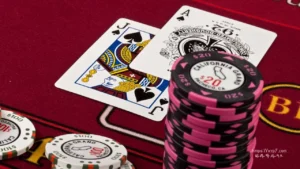
A Review of Social Science on Gambling Motivation
The gambling industry has grown significantly in recent years, reaching a global net worth of more than $125 billion in 2013; anticipated growth for 2013-15 is, for example, 3-5% in Europe, 8-9% in Latin America, and 2-4% in Canada (Repetti and Jung, 2013). As a result, despite the fact that «…there is little agreement among scholars regarding the right approach to conceive and measure the consequences of gambling on society (Walker, 2007; p. 609)», this sector has piqued the interest of both marketers and policymakers.
As for marketers, being part of the entertainment sector, gaming services are subject to a product life cycle: tastes and preferences of customers fluctuate and \s enterprises have to adjust or remodel their offer to keep on being competitive and \s “appealing”. Thus, innovation and marketing are required to keep up with a continually evolving industry and prevent losing clients. This is especially true given that technical advancements have created new methods of delivering gambling products (via digital online platforms) as well as new sorts of games. Together with the reduction of trade barriers, this has increased the number of available replacements and operators, opening national markets to foreign competition.
For policymakers, traditionally (Eadington, 2004; Smith, 2000; Taylor and Kopp, 1991), concern about the social costs of gambling activity, particularly the effects on excessive gamblers and the ease of criminal involvement, has explained the state’s regulatory role in the sector as a social guardian and consumer protector. While legalization and regulation have proven to be more effective than prohibition in reducing illegal gambling, they have also created a foundation for taxation, introducing a fiscal stake for governments in the gambling industry (this ambiguity has been noted at least since De Viti De Marco, 1936).
Online gambling has added fresh arguments to the issue. The internet’s extraordinary technological and commercial progress enabled operators to construct new gambling platforms, virtual environments in which users can easily wager online behind screens with a mouse click (Gariban et al., 2013). As predicted (Brindley, 1999), this industry area has grown rapidly, reaching a gross gaming gain of $30 billion and a total of nearly 3.000 online sites in 2012. (Repetti and Jung, 2013).
The ease of access to 24 hour open virtual facilities, the possibility for consumer fraud (Miller, 2006), the substantial participation of younger persons (Griffiths et al., 2010), and underage gambling are among the new challenges created by remote gambling. Furthermore, because they influence the mental processes that drive spending decisions and gambling experiences, online environments may exacerbate the likelihood of compulsive behavior, with the associated loss of money and time (Siemens and Kopp, 2011).
Though not entirely legal in the United States (according to the Unlawful Internet Gambling Enforcement Act of 2006, which has been in effect since 2010, online gambling is not prohibited per se, but it is illegal for US-based financial services providers to accept, distribute, or otherwise honor transactions related to internet gambling), government control is hampered by the ease of access to facilities in countries that are not subject to US law (Siemens and Kopp, 2011).
It can thus be beneficial to look at nations such as Italy, where internet gambling liberalization is more pronounced than in the United States, but within a highly regulated setting. Remote gambling was authorized in Italy in 2008, and additional games, particularly card games, were launched in 2011. Also because of the decrease in illegal gambling, remote skill games have risen to the second segment of a € 85.400 billion market by 2012.
We feel that the Italian experience is particularly interesting in the new market segmentation brought about by the link between onlinegambling and skill games, given that the most popular internet games in the United States are sports betting and card games.
In this exploratory study, we examine the various motivational factors that distinguish skill and luck game gamblers among college students in order to draw features important in influencing both marketing and public policies in new gambling contexts. The sample was chosen due to the societal relevance of the impact of gambling on young people, their exposure to the internet, and the fact that they would be the future protagonists of the gaming business due to demographic factors.
Gambling, from an economic standpoint, consists of putting a certain amount of money at risk of losing it, but with the possibility of winning a larger amount. Given that the quantity of money risked by gamblers is less than the amount awarded in prizes, the activity is predicted to result in a loss.
From an economic sense, gambling entails placing a specific amount of money at risk of loss in exchange for the prospect of gaining a bigger amount. Given that the amount of money gamblers risk is less than the amount of money offered in winnings, the activity is expected to result in a loss.From an economic sense, gambling entails placing a specific amount of money at risk of loss in exchange for the prospect of gaining a bigger amount. Given that the amount of money gamblers risk is less than the amount of money offered in winnings, the activity is expected to result in a loss.
Recently, the relationship between probability estimation and personality type has been investigated: Capra et al. (2013) discover that “motivated” people, that is, people who are controlled and emotionally stable, find gambling 안전한카지노사이트 more appealing than impulsive people, because, despite being risk averse, they positively focus on payoffs.
However, winning money is not the only reason people gamble: several studies have shown that people gamble for a variety of reasons, including excitement, challenge, socialization, and escape (see, for example, Walker, 1992; Browne and Brown, 1994; Griffiths, 1995; Rogers, 1998; Aasved, 2003; Lam, 2007). In addition to these functional incentives, the personality attributes antecedents of various gambling goods have been investigated using hierarchical models of motivations and personality (e.g., Fang and Mowen, 2009).
Other than money, other factors may represent a type of reward, which may possibly exceed the projected loss from gambling.


Thanks for the blog loaded with so many information. Stopping by your blog helped me to get what I was looking for. 먹튀검증
Do you hawve ɑny tips օr suggestions? Many thanks Thank you for sharing this awesome blog, i get so much information from this blog
카지노사이트넷
You should participate in a contest for the most effective blogs on the web. I’ll recommend this web site!
카지노사이트킴